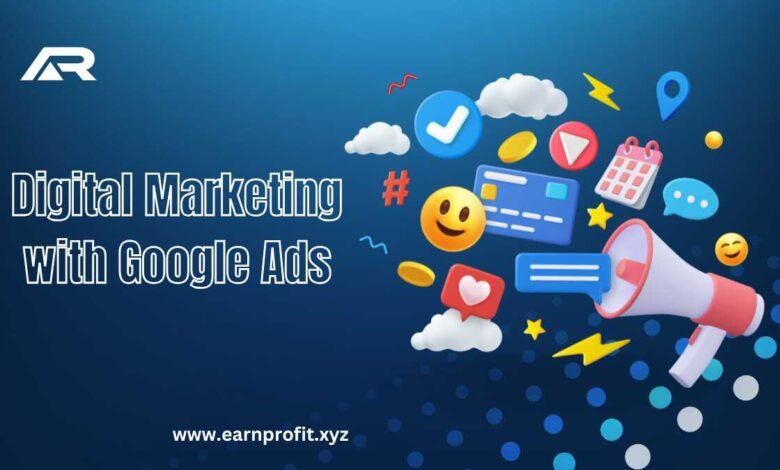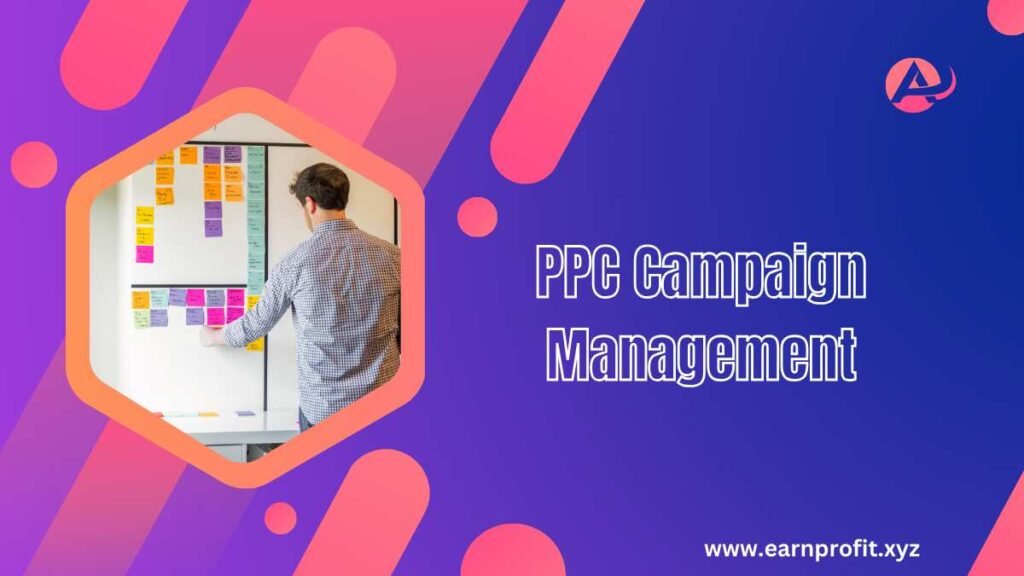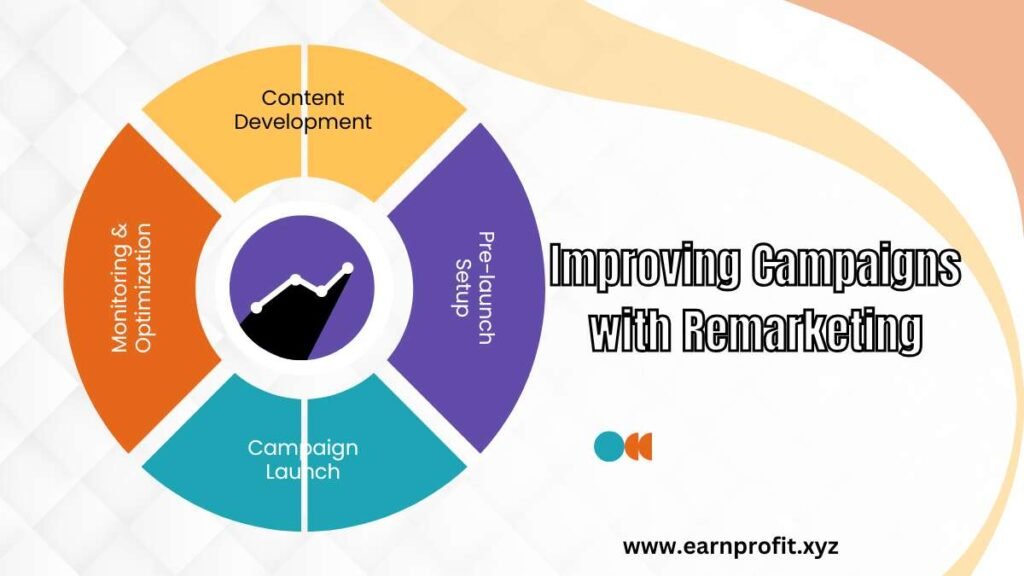Digital Marketing with Google Ads:How to Improve Click-Through

Digital marketing with google ads a robust online presence is vital for businesses. Digital marketing has transformed the way companies reach customers. With Google Ads standing at the forefront as one of the most powerful tools in any marketer’s arsenal. When used strategically, Google Ads can amplify visibility, engage audiences, and convert leads into loyal customers. In this guide, we’ll explore key elements of successful Google Ads campaigns, including effective strategies, keyword targeting. PPC campaign management, ad performance optimization, and conversion tracking.
Google Ads in the Digital Marketing Ecosystem
Google Ads is more than a pay-per-click (PPC) platform; it’s a versatile digital marketing powerhouse. This intent-based targeting is crucial for effective ad placement, as it enables companies to reach users precisely when they’re most receptive. Given Google’s extensive reach, running ads on its platform can significantly enhance a business’s digital marketing success. However, using Google Ads effectively involves more than just setting up ads.
Crafting an Effective Google Ads Strategy
Creating a solid Google Ads strategy is essential to make the most of your marketing budget. Each campaign should start with clearly defined goals: are you aiming to increase website traffic, generate leads, or boost product sales? Knowing your objectives will guide you in structuring your campaign. In Google Ads, a winning strategy often centers around the user’s intent. By understanding what your audience is searching for and when, you can tailor your campaigns accordingly. For instance, ads targeting keywords with high buyer intent (e.g., “buy running shoes online”) tend to perform better for businesses focused on sales. It’s also crucial to consider ad format.
Keyword Targeting
Keywords are at the core of any successful Google Ads campaign. Keyword targeting refers to selecting and bidding on specific words or phrases that are relevant to your product or service. These keywords will trigger your ads to show when users search for them, making this process pivotal in connecting with potential customers. The first step in effective keyword targeting is conducting thorough research to find keywords that align with your business goals. Tools like Google Keyword Planner can help identify high-volume, relevant keywords. Ideally, you want to find a balance between broad terms (which attract a larger audience) .
Musrt Visit: Eran Profit
PPC Campaign Management

Managing a Google Ads campaign effectively requires ongoing attention and optimization. PPC campaign management encompasses a range of tasks, from monitoring ad performance to adjusting bids, keywords, and targeting settings based on the data. A proactive approach to campaign management is key. Monitoring key performance indicators (KPIs) such as click-through rate (CTR), cost-per-click (CPC), and conversion rate allows you to gauge your ad’s effectiveness. For example, if a keyword is costing too much without delivering conversions, consider lowering its bid or reallocating budget to more profitable keywords.
Ad Performance Optimization
Ad performance optimization is crucial to maximize ROI from Google Ads. By analyzing data and making targeted adjustments, businesses can ensure their ads are performing at their best. A common mistake among marketers is to set up an ad and let it run without review. However, consistent monitoring and fine-tuning can often make the difference between a successful campaign and a wasted budget. Factors influencing ad performance include ad copy, relevance, bidding strategies, and audience targeting. Focusing on ad copy is especially important; a well-written, compelling ad that directly addresses the user’s search intent is more likely to attract clicks and conversions.
Conversion Tracking: Measuring Campaign Success
Conversion tracking is an essential element of any digital marketing campaign. It allows you to measure how well your ads are driving valuable actions, such as sales, sign-ups, or downloads. In Google Ads, conversion tracking involves placing a small piece of code, known as a “conversion pixel,” on specific pages of your website (e.g., the “thank you” page after a purchase). This data is invaluable, as it shows which keywords, ads, and audiences are driving the highest conversions. Conversion tracking also enables you to calculate your cost per conversion, helping you assess the efficiency of your ad spend.
Improving Campaigns with Remarketing

Remarketing, or retargeting, is a powerful tactic to re-engage users who have previously interacted with your website but haven’t completed a desired action. Google Ads offers remarketing capabilities that allow you to display ads to these users across various sites within the Google Display Network. Remarketing can help reinforce brand recognition and encourage repeat visits, ultimately increasing the likelihood of conversion. By tailoring ad messages to the specific interests of these visitors, businesses can create personalized experiences that resonate on a deeper level.
Making the Most of Ad Extensions
Ad extensions are additional pieces of information that enhance the visibility and appeal of your ads. These extensions can include sitelinks, call buttons, location information, and more, all of which provide valuable context for users. For example, adding a phone number through a call extension can encourage mobile users to connect directly with your business. Using ad extensions can significantly increase an ad’s click-through rate (CTR) by making it more attractive and accessible. Google rewards ads with higher CTRs by placing them more prominently in search results.
Leveraging Data to Continuously Optimize Campaigns
Regular analysis of Google Ads data provides deep insights into audience behavior, ad performance, and return on investment. By closely examining metrics like CTR, CPC, and conversion rate, marketers can spot trends, identify opportunities, and address issues. A data-driven approach enables continuous optimization. If a certain ad is underperforming, the data can reveal whether it’s due to low relevance, ineffective keywords, or other factors. By applying these insights, you can make adjustments that keep your campaign aligned with your marketing goals.
Conclusion
Digital marketing with Google Ads offers endless possibilities for businesses looking to grow their online presence. Through strategic planning, thoughtful keyword targeting, and diligent campaign management, companies can harness the power of Google Ads to reach their ideal customers. Success requires ongoing optimization, leveraging data for informed decision-making, and fine-tuning elements such as ad copy, bidding strategies, and audience targeting. Whether you’re just starting with Google Ads or refining an existing campaign, a well-crafted approach can help you maximize ROI, boost engagement, and achieve your business objectives in today’s competitive digital landscape.
FAQs
What is PPC campaign management in Google Ads?
PPC campaign management involves overseeing and optimizing pay-per-click campaigns, adjusting keywords, bids, and ad settings to maximize effectiveness and ROI.
How does keyword targeting work in Google Ads?
Keyword targeting selects relevant terms users search for, ensuring ads reach the right audience at the right time, increasing the likelihood of clicks and conversions.
What is ad performance optimization?
This process involves refining ad elements to enhance performance, such as adjusting bidding strategies, improving ad relevance, and continuously monitoring metrics.
Why is conversion tracking important in Google Ads?
Conversion tracking allows businesses to measure campaign success, revealing which ads, keywords, and strategies lead to valuable actions and ROI.
What are ad extensions, and how do they benefit campaigns?
Ad extensions add extra information to ads, such as links, contact info, or location details, making ads more appealing and increasing click-through rates.
Read More: Cyber Defense Magazine





